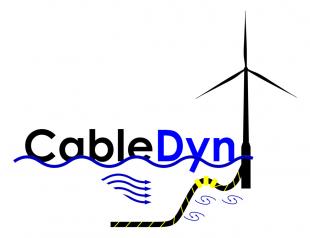In FOWTs, a large length of the power cable, from the base of the floating foundation to the seabed, is directly exposed to dynamic loading caused by ocean waves, currents, and turbulence. Waves move the floating foundation, and currents produce cable oscillations generated by vortex shedding. In the water column a cable experiences enhanced dynamic loads and undergoes complicated motions. When a dynamic cable is installed in deep water, the upper portion of the cable is exposed to high mechanical load and fatigue, and the lower part to substantial hydrostatic pressure. Motion of the floating foundation in surge, sway, and heave causes the power cable to undergo oscillatory motions that in turn promote vortex-induced vibration (VIV) - which is analogous to the vibration experienced by long marine risers used in offshore oil and gas platforms. As a result, large and complex deflections of the cable occur at various locations along its length, altering its mechanical properties and strength, and eventually leading to fatigue-induced failure. The dynamic forces produce cyclical motions of the cable, and a sharp transition in cable stiffness is expected in cases where these motions and loads concentrate toward a rigid connection point. Repetition of the foregoing process and over-bending can also lead to fatigue damage to the cable. To date, hardly any research has been undertaken to investigate the 3-dimensional nature of VIV, dynamic loads, and motion of power cables subject to combined waves, currents, and turbulence. Moreover, no detailed guidance is given in design standards for the offshore wind industry on how to predict, assess, and suppress fatigue failure of dynamic cables under wave-current-turbulence conditions. Power cable failure is much more likely to occur if the design of such cables is based on poor understanding of the hydrodynamic interactions between cables and the ocean environment.
This fundamental scientific research aims to investigate the dynamic loading, motion response, impact of vortex induced vibration and its suppression mechanism, and fatigue failure of subsea power cables subjected to combined 3-dimensional waves, currents, and turbulence. This research will be approached by both numerical and physical modelling of power cable's response. Controlled experimental tests on scale models of power cables will be undertaken in Edinburgh University's FloWave wave-current facility where multi-directional waves and currents of various combinations of amplitudes, frequencies, and directions can be generated. Advanced novel phenomenological wake oscillator models, calibrated and validated with FloWave experimental results, will be used to simulate the hydrodynamic behaviour of power cables. The resulting software tools, experimental data, analysis techniques for characterising cable dynamics and VIV, methodologies established for fatigue analysis, and other outcomes of this research will enhance the design of cost-effective power cables. By reducing uncertainty, our research will lead to increased reliability of offshore power cables, of benefit to the power cable manufacturing industry.



